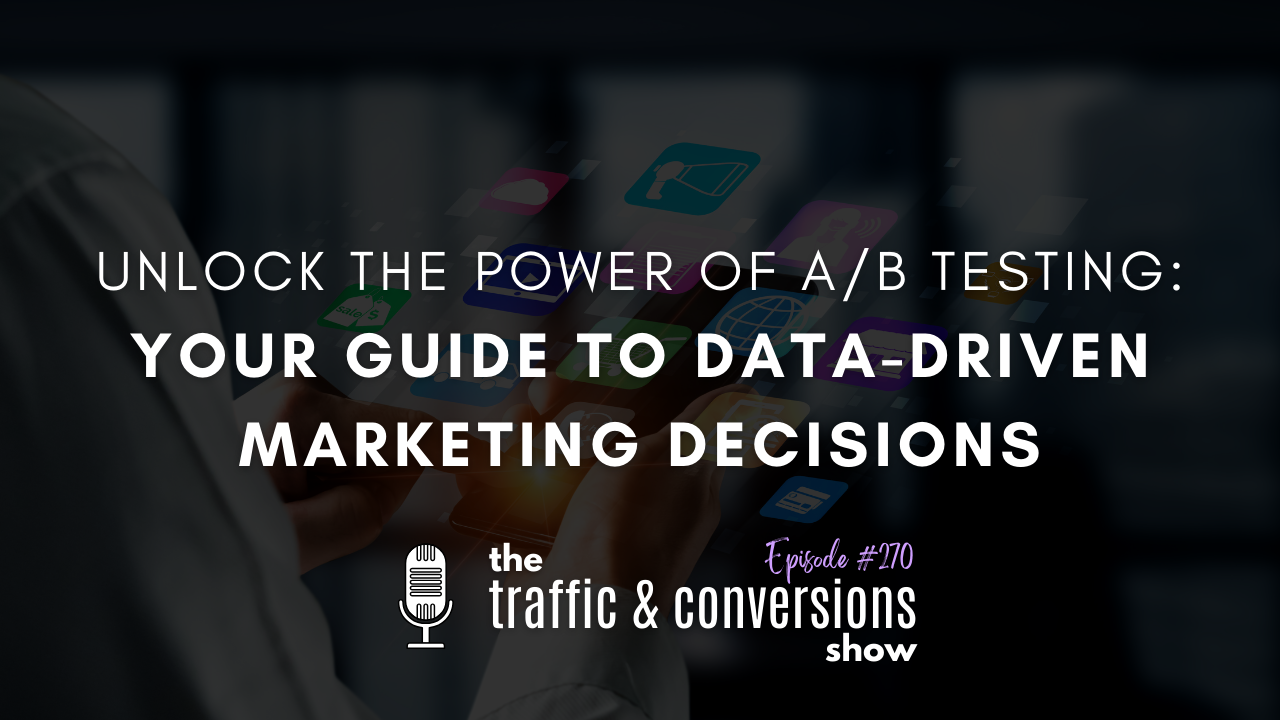In the dynamic world of marketing, the art of optimization often hinges on a powerful technique known as A/B testing or split testing. This method serves as a compass for marketers, allowing them to compare two versions of a webpage, email, ad, or any marketing asset to discern which one resonates better with their audience.
Why A/B Testing Matters:
- Data-Driven DecisionsAt the core of A/B testing is the shift from instinct-driven marketing to a more sophisticated, data-centric approach. Marketers leverage this method to make decisions grounded in real data rather than intuition. It’s just like driving with a Sat Nav instead of relying on gut feelings alone, and has the ultimate goal of enhancing the return on investment (ROI) in both monetary and energy terms.For example, you might use A/B testing to compare two subject lines—one straightforward and descriptive (A), the other creative and intriguing (B). When the data reveals a 20% higher open rate for subject line B, you can use this newfound knowledge to inform future campaigns. A/B is crucial in identifying the changes that will have the most significant impact on conversions.
- Optimized ConversionsFor coaches and course creators, the optimization of conversions is the heartbeat of your business. And A/B testing becomes a powerful ally in identifying changes that wield the most significant impact on click-through rates, conversion rates, and overall revenue.
Imagine that you offer one-on-one coaching services and your website has a landing page where potential clients can sign up for a free consultation. If your current landing page has a prominent “sign up now” button above the fold. and you’re unsure if the color of the text on the button is most effective, you could run an A/B test to make an informed decision. You might keep version A the same as it is, and in version B, you change the button color to something different. After analyzing the results, you might find that version B leads to a 40% increase in signups, which gives you a very powerful insight into CTA buttons moving forward.
- Improved User ExperienceThe pursuit of a seamless and engaging user experience lies at the heart of A/B testing. By revealing what resonates with the audience, this method contributes to an enhanced overall user experience. For instance, a coach offering one-on-one sessions might streamline the scheduling process through A/B testing, resulting in a significant increase in booking requests.
Implementing A/B Testing Effectively:
A successful A/B test begins with a clear definition of objectives—whether it’s boosting click-through rates, increasing sign-ups, or driving more sales. These well-defined goals set the course for the testing journey, providing direction and purpose.
Craft two versions (A and B) that differ only in the aspect intended for testing forms the essence of A/B testing. Whether it’s tweaking headlines, call-to-action buttons, or images, isolating variables simplifies analysis and empowers marketers to make data-driven decisions.
Audience splitting is about creating a fair testing environment where the impact of the changes that you’re testing can be accurately assessed without the interference of external variables.
When running an A/B test, it’s crucial to divide your audience into two groups randomly to minimize these biases and ensure that the results accurately represent your target demographic.
Executing the A/B test involves showcasing version A to one group and version B to another. Patience becomes a virtue as the test runs for a sufficient duration to gather statistically significant data, ensuring the results are not merely due to chance.
The pivotal moment arrives when you analyze the results, looking for statistically significant differences between versions A and B. This phase transforms raw data into valuable insights, and guides your marketing strategies based on solid evidence.
Common Pitfalls and Tips:
Testing Too Many Variables
Avoid the temptation to test too many variables simultaneously. If you want to maintain clarity and pinpoint effective changes, it’s essential to change only one variable at a time.
Ignoring Sample Size
A/B testing requires a sufficiently large sample to draw meaningful conclusions. Small samples can lead to unreliable results, underscoring the necessity of ensuring an adequate number of participants.
Not Monitoring Long-Term Effects
A common oversight is the failure to monitor the long-term effects of changes implemented based on initial test results. While a variation may appear as a winning one initially, its effectiveness may dwindle over time due to shifting user behaviors or external factors. Continuous monitoring helps marketers adapt to these changes, contributing to sustained improvements in their marketing strategy.
Conclusion:
In essence, A/B testing is more than a one-time strategy; it’s an ongoing journey of optimization. By consistently testing and refining marketing efforts, businesses can stay ahead of the competition and ensure their strategies align with audience preferences. The power of A/B testing lies in its ability to empower marketers to make data-driven decisions, optimize conversions, and provide lasting value to their audience. As the marketing landscape evolves, embracing A/B testing as a dynamic and continuous process ensures strategies remain finely tuned and resonant with the ever-changing needs of the audience.
Ready to learn more about how to optimize your traffic and funnels through testing? Send me a DM on Instagram @themichellefernandez to get started!
Let’s grow your business together!


